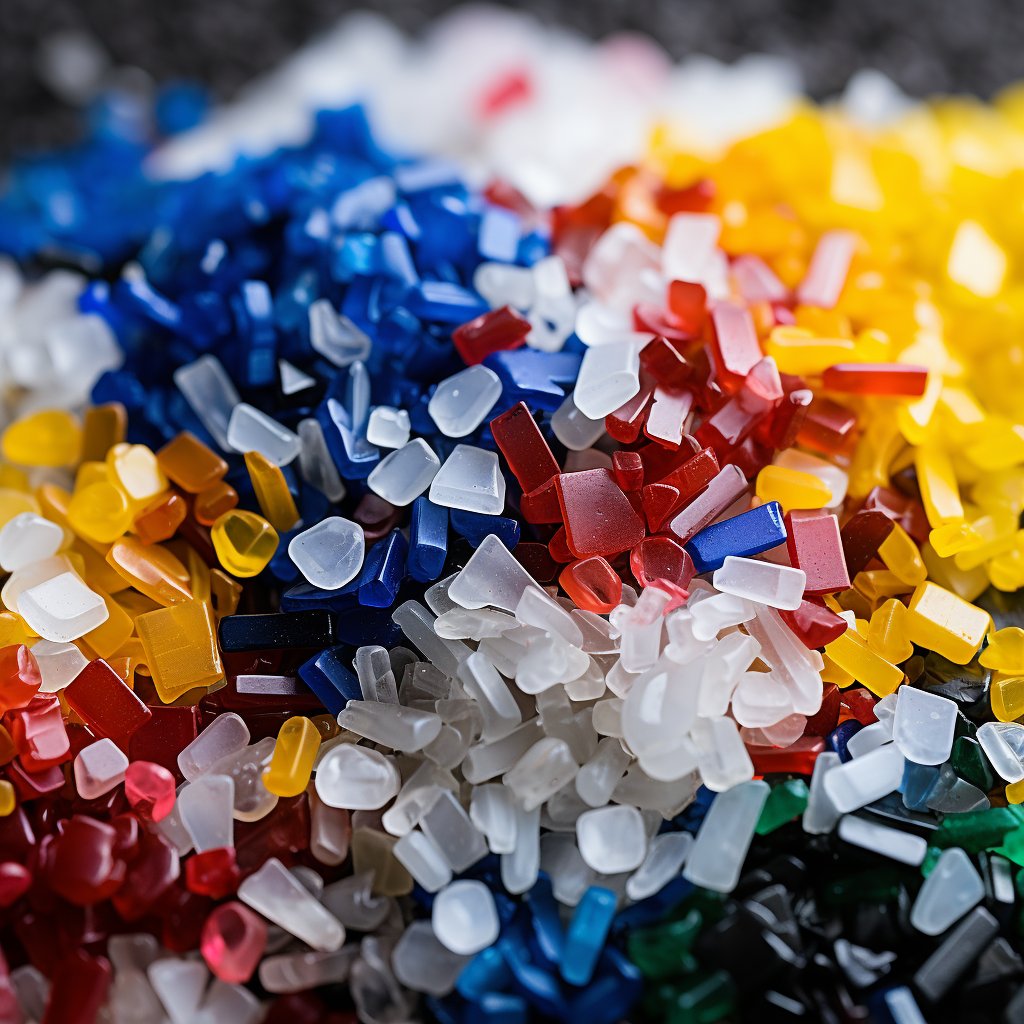Acrylonitrile is a colourless, liquid organic compound that is used extensively in the manufacturing of plastics, synthetic fibres, and other products. It is also known by its chemical formula, CH2CHCN, and is commonly abbreviated as ACN. In this article, we will discuss the properties of Acrylonitrile, its history, industrial usage, application areas, and consumer product examples.
Acrylonitrile was first synthesised in the 1890s, but it wasn’t until the 1930s that it became a commercially viable product. During World War II, demand for synthetic fibres and plastics increased dramatically, leading to a surge in Acrylonitrile production. In the years that followed, Acrylonitrile became a key component in the production of acrylic fibres, ABS plastics, and other products.

Acrylonitrile is a widely used plastic material that has gained popularity in various industries due to its unique combination of properties, including chemical resistance, thermal stability, and mechanical strength. It has found its way into countless products that we use daily, from automotive parts and electronics to medical devices and household items. Despite its numerous advantages, Acrylonitrile also has some significant drawbacks, including its toxicity and difficulty in recycling.

What is Acrylonitrile:
Acrylonitrile is a highly toxic, flammable liquid that is used primarily in the production of acrylic fibres and plastics such as ABS (Acrylonitrile-Butadiene-Styrene). It is a derivative of propylene, and its chemical formula is CH2CHCN. The compound is known for its high boiling point, low vapour pressure, and excellent solubility in water and other solvents. It is a colourless, transparent liquid with a slightly sweet odor.
Properties of Acrylonitrile:
Acrylonitrile is a highly reactive and versatile compound, with numerous applications in the industrial and consumer markets. Some of its most notable properties include:
- Flammability: Acrylonitrile is highly flammable, and its vapors can ignite easily in the presence of heat or a spark.
- Toxicity: Acrylonitrile is a highly toxic compound, and exposure to its vapors or liquid form can cause severe health problems, including cancer, liver damage, and nerve damage.
- Chemical stability: Acrylonitrile is a relatively stable compound, with good resistance to chemical reactions and degradation.
- Solubility: Acrylonitrile is highly soluble in water, alcohols, and other solvents, making it easy to mix and use in a variety of applications.
Industrial Usage of Acrylonitrile:
Acrylonitrile is used extensively in the manufacturing of a wide range of products, including:
- Synthetic fibres: Acrylonitrile is the primary component in the production of acrylic fibres, which are used in clothing, carpets, and other textiles.
- Plastics: Acrylonitrile is a key component in the production of ABS plastics, which are used in a wide range of consumer products, including toys, electronics, and automotive parts.
- Adhesives: Acrylonitrile is used in the production of adhesives, which are used in a variety of industrial applications.
- Resins: Acrylonitrile is used in the production of resins, which are used in the construction, marine, and aerospace industries.
Application Areas of Acrylonitrile:
Acrylonitrile is used in a wide range of application areas, including:
- Textiles: Acrylonitrile is used in the production of acrylic fibres, which are used in clothing, carpets, and other textiles.
- Consumer products: Acrylonitrile is used in the production of a wide range of consumer products, including toys, electronics, and automotive parts.
- Construction: Acrylonitrile is used in the production of resins, which are used in the construction industry.
- Aerospace: Acrylonitrile is used in the production of resins, which are used in
Advantages and disadvantages compared to alternative plastics
Advantages of Acrylonitrile:
- Chemical resistance: Acrylonitrile has good resistance to chemicals, making it an ideal material for use in harsh environments.
- Thermal stability: Acrylonitrile has good thermal stability, allowing it to withstand high temperatures without melting or degrading.
- Mechanical strength: Acrylonitrile has excellent mechanical strength, making it suitable for use in products that require durability and resistance to impact.
- Lightweight: Acrylonitrile is a lightweight material, making it ideal for use in products that require low weight, such as automotive parts and electronics.
Disadvantages of Acrylonitrile:
- Toxicity: Acrylonitrile is a highly toxic compound, and exposure to its vapors or liquid form can cause severe health problems.
- Flammability: Acrylonitrile is highly flammable, making it a safety hazard in certain applications.
- Recycling: Acrylonitrile is difficult to recycle due to its toxic nature, and its disposal can pose environmental risks.
Comparison with alternative plastics:
Compared to other plastics, Acrylonitrile has several advantages and disadvantages. Compared to PVC (Polyvinyl Chloride), Acrylonitrile has better chemical and thermal resistance, but is more expensive and difficult to recycle. Compared to Polyethylene, Acrylonitrile has better mechanical strength and thermal stability, but is more expensive and toxic.
Acrylonitrile Recycling:
Recycling of Acrylonitrile is difficult due to its toxic nature. However, there are some recycling methods available that can be used to recover Acrylonitrile from waste streams. These methods include pyrolysis and gasification, which convert Acrylonitrile into other useful chemicals.
The recycling of Acrylonitrile can be challenging due to its toxic nature, but there are methods available that can be used to recover the material from waste streams. The two primary recycling methods for Acrylonitrile are pyrolysis and gasification.
Pyrolysis is a process that involves heating the waste material to high temperatures in the absence of oxygen, which breaks down the material into its constituent parts. In the case of Acrylonitrile, pyrolysis can be used to recover the material in the form of other useful chemicals, such as ammonia and acrylonitrile-butadiene-styrene (ABS) resin.
Gasification is a process that involves heating the waste material to high temperatures in the presence of a gasifying agent, such as air or oxygen. This process breaks down the material into its constituent parts, which can then be used to produce electricity or other useful products.
Advantages of Acrylonitrile Recycling:
- Reduces waste: Recycling of Acrylonitrile reduces the amount of waste that goes to landfills, reducing environmental impact.
- Saves resources: Recycling of Acrylonitrile saves resources by reducing the need for virgin material production.
- Cost-effective: Acrylonitrile recycling can be cost-effective when compared to the cost of producing virgin material.
Disadvantages of Acrylonitrile Recycling:
- Toxicity: Acrylonitrile is a highly toxic material, and its recycling can pose a risk to workers and the environment.
- Energy-intensive: The recycling process can be energy-intensive, leading to higher greenhouse gas emissions and higher costs.
Environmental and Global Impact:
Acrylonitrile recycling can have a positive impact on the environment by reducing waste and conserving resources. However, the recycling process can also have a negative impact on the environment if not done properly. The release of toxic gases during the recycling process can lead to air pollution, and the disposal of hazardous waste can cause soil and water pollution.
The global impact of Acrylonitrile recycling is also significant. The demand for Acrylonitrile is increasing globally, and recycling can help to reduce the reliance on imported virgin material. This can have a positive impact on local economies, reducing the trade deficit and creating jobs in the recycling industry. Additionally, Acrylonitrile recycling can help to reduce the carbon footprint of industries that use the material, helping to meet global carbon reduction targets.
Market Price Developments:
The price of Acrylonitrile is highly volatile and is subject to fluctuations in the global market. In recent years, the price of Acrylonitrile has increased due to rising demand from the automotive, construction, and electronics industries.
Future Market Prognosis:
The demand for Acrylonitrile is expected to continue growing in the future, driven by the increasing demand for lightweight and durable materials in various industries. The growing awareness of environmental issues is also expected to drive the demand for sustainable and recyclable materials, which may affect the demand for Acrylonitrile in the future. The development of new applications and technologies is also expected to create new opportunities for the use of Acrylonitrile in various industries.
Acryolonitrole:
Acrylonitrile is a widely used plastic material that has numerous advantages in industrial and consumer applications. Its unique properties, including chemical resistance, thermal stability, and mechanical strength, have made it an essential material for a broad range of products, from automotive parts and electronics to medical devices and household items. Despite its many advantages, Acrylonitrile also has significant drawbacks, such as its toxicity and difficulty in recycling.
Acrylonitrile recycling has gained attention due to its potential to reduce plastic waste and its impact on the environment. While there are challenges associated with the recycling process, such as cost and technological barriers, it offers promising opportunities to create a more sustainable and circular economy.







